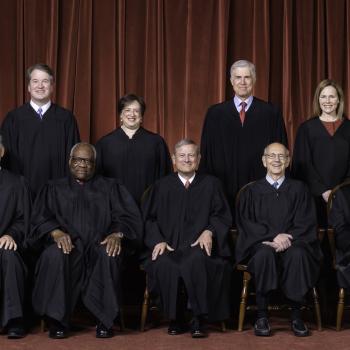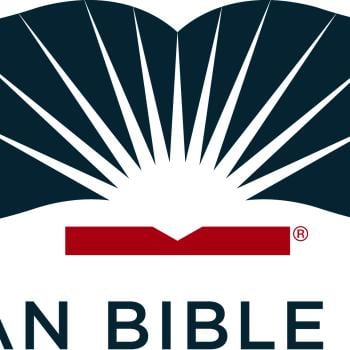
There’ve Been Fourteen Pope Leos
On May 8th, Cardinal Robert Francis Prevost of Chicago was chosen as the 267th pope of the Roman Catholic Church and the first American pope as well. In accordance with the tradition of popes taking the name of a previous honored saint, he chose to be called Pope Leo XIV. Thus, the Church has had fourteen popes who have called themselves Leo. What does Leo mean? And why did this pope choose Leo?
Leo is a Latin word meaning “lion.” So, it seems that this pope chose that name because he desires to be seen as “strong” and “courageous.” Yet his reputation has been as a humble servant of God. That is what he is supposed to be since he has been an Augustinian priest and head of the Augustinian order.
But this pope apparently chose that name primarily to be associated with some previous Pope Leos. If we look into the history of the Pope Leos of this largest church denomination in the world—in which half of all people who identify as Christian are members of this Roman Catholic Church—we find that some of these Pope Leos have indeed been strong lions.
Pope Leo I Presided Over the Council of Chalcedon and Creed
Three of the previous 265 popes of the Catholic Church have been called “the Great.” Also, all three of them were named Pope Leo. And all three were involved in some of the most important events in the history of this church. For example, Pope Leo I also was Pope Leo the Great. He was head of the Catholic Church from 440 to 461, when he died. He clearly demonstrated his internal strength when the conqueror Attila the Hun invaded Italy, intending to sack Rome. But Pope Leo I met Atilla the Hun face-to-face and convinced him otherwise.
Pope Leo I also was the only pope the Church has ever designated as a Doctor of the Church. This title has been given otherwise only to honored saints, such as Saint Augustine, because their theological writings greatly impacted Church tradition. An important reason for this designation of Pope Leo I presided over and greatly influence the Council of Chalcedon. Held in 451, it is also called the Fifth Ecumenical Council. It drafted the Chalcedonian Creed about the supposed two natures of Christ. This Chalcedonian and the Nicene Creed the Catholic Church has regarded as its two most important theological documents.
In my magnum opus book, The Restitution: Biblical Proof Jesus Is Not God, I have 100 pages on the church development of identity Christology. A few pages of it are about this council. I believe its creed extended the Church’s error in proclaiming that Jesus is God and that he has two natures—a human nature and a divine nature. I show most thoroughly in my book that this is a serious departure from the Bible; moreover, there is nothing in the Bible about Jesus having two natures and that one of them is divine.
Pope Leo III Crowned Emperor Charlemagne
Pope Leo III took the seat of the Holy See in the year 795. He is perhaps most known for crowning Charlemagne emperor of the Holy Roman Empire in the year 800. Charlemagne was much known for spreading Christianity throughout Medieval Europe.
Pope Leo IX Presided Over the Great Schism
Pope Leo IX is most known for directing the split in the Catholic Church in 1049, called “the Great Schism.” From then on and to this day, the western branch of Catholicism has been called the Roman Catholic Church, and the eastern branch of Catholicism has been called the Eastern Orthodox Church. The reason for the split seems most inconsequential to many people, especially those outside of the Church. There were multiple reasons, but one theological reason is most known. It was that the western branch had added to the Nicene Creed that not had the Holy Spirit “proceeded” from God the Father but that “also the Son” had too. This Filioque Clause, as it came to be called, the eastern branch regarded as an aberration of Christian faith. They also had disagreements about how much authority should be given to the pope.
After 1054, the center of the Roman Catholic Church was Rome, and the center of the Eastern Orthodox Church was Constantinople, in present Turkey.
Pope Leo X and Martin Luther
Pope Leo X is most known for excommunicating Friar and professor Martin Luther in 1551. It had occurred because, in 1517, Luther wrote a list of grievances against his Roman Catholic Church mostly regarding its pitiful practice of indulgences (e.g., paying money to get out of Pergatory when one dies). That document Luther called “Ninety-Five Theses” because it consisted of that many stated grievances. According to tradition, Luther nailed that document to the door of the Wittenberg Church. Luther was a theological professor there in the city of Wittenberg at the university. This act started the Protestant Reformation.
Pope Leo XIII, the Social Reformer
Pope Leo XIII served in the papacy from 1878 to 1903. He was most known as a respected for his pastoral care and as a social reformer. Pope Leo XIV is so far most known for his pastoral care as a missionary serving in Perus for about twenty years. Therefore, some Roman Catholic historians and other experts are saying it is probably the reputation of Pope Leo XIII that Pope Leo XIV desires to be most associated with and thus why he chose Leo as his name.













